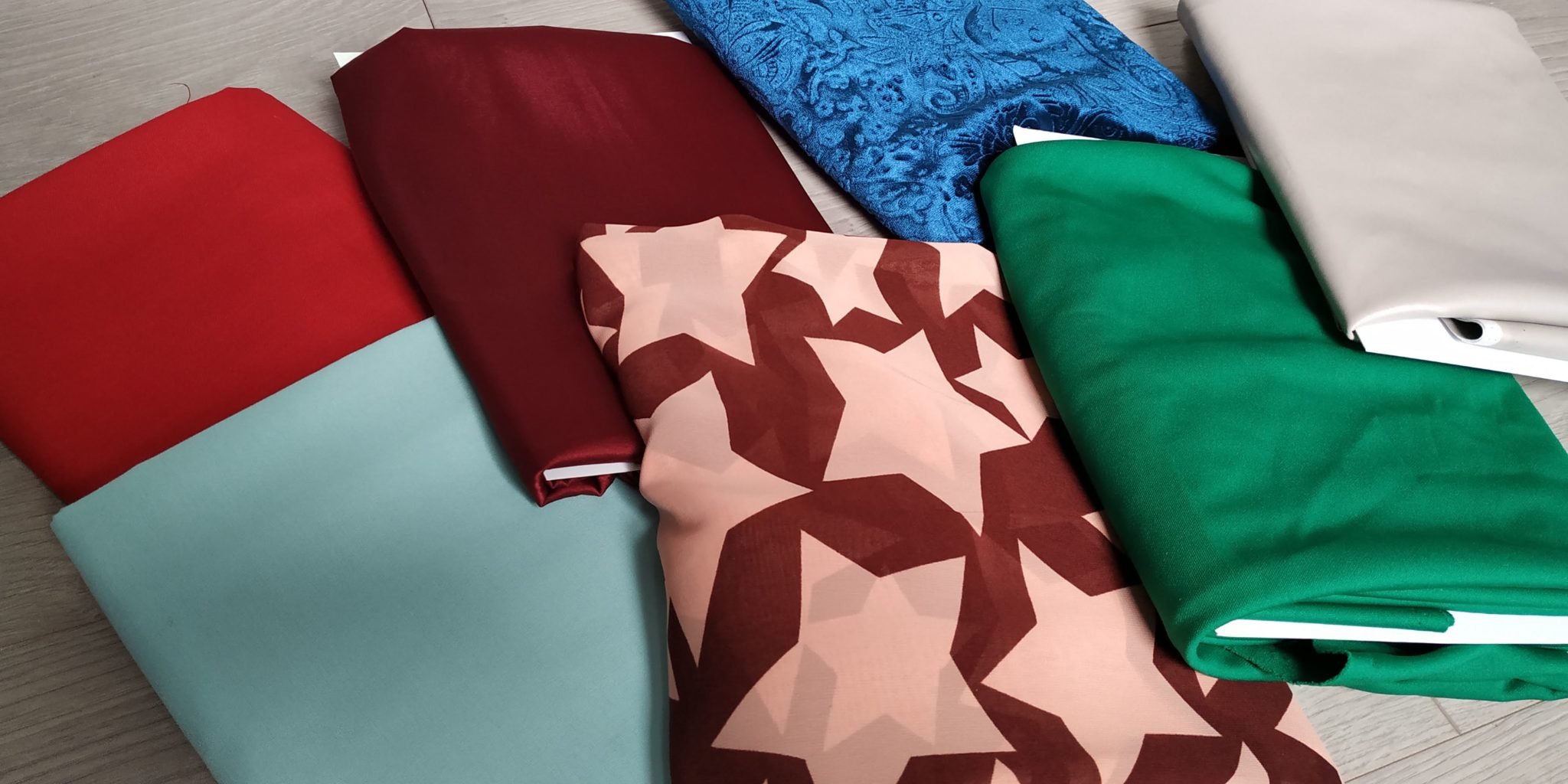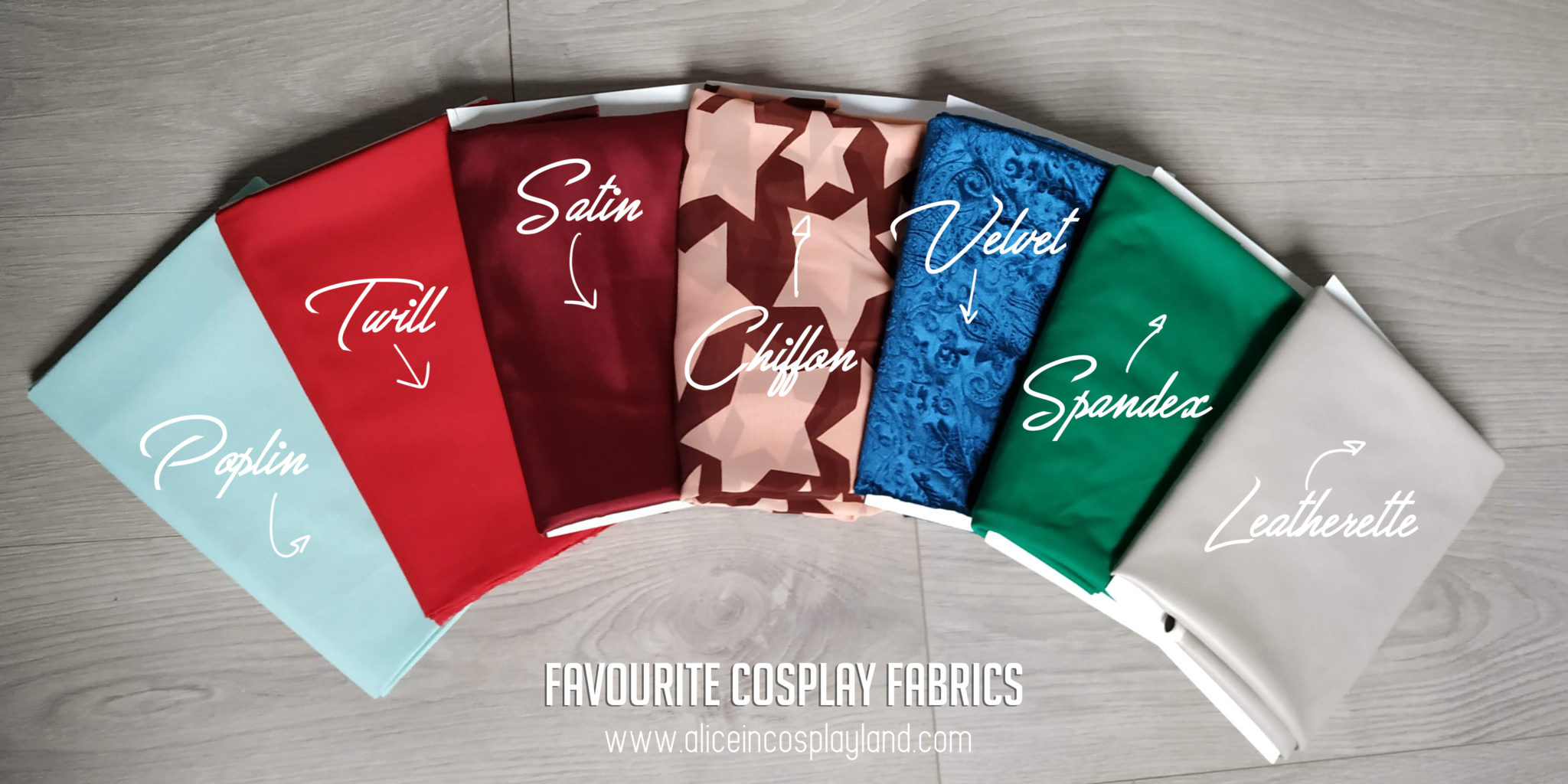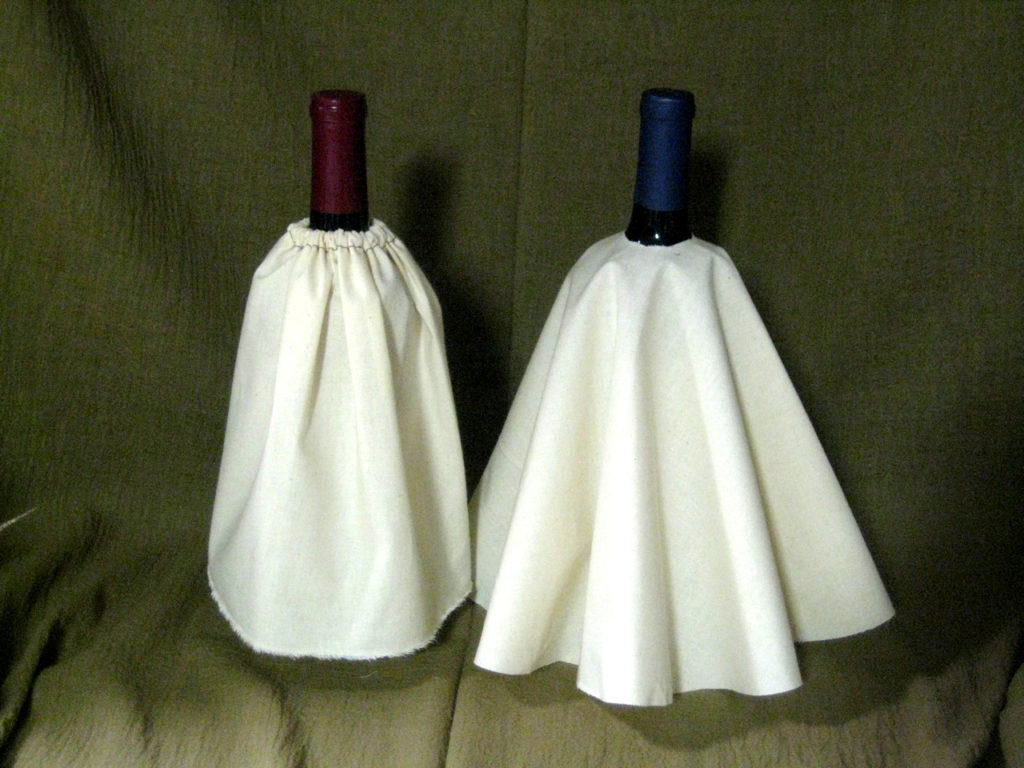When you start making cosplays it is clear that at some point you will need to use fabric. However, the real question could be what fabrics should you choose. Long gone is the time when I didn’t know where to buy fabric for cosplay. After many years experimenting and trying new materials I came up with this list of my favourite fabrics for cosplay.
Quick tip to understand fabric
Fabric terminology can be a bit confusing. Keep in mind that when we name a fabric we often refer to some of its characteristics. The type of fiber used and the type of weave or knit are some of the most common factors to classify them. They can also specify their use, weight or design they feature.

Type of weave: Plain; Fiber: Lycra; Use: Swimwear
For example, when we talk about cotton poplin, we know the fiber or material is cotton and the type of weave (the way in which fibers interlock) is called poplin. On the other hand, cotton jersey would have cotton as the fiber employed but in this case the fabric would be knitted with a jersey stitch.
Fabrics for cosplay and best ways to use them
This is a list of my favourite types of fabrics, once you get to know your materials you may prefer to use different ones. There are many others that I don’t mention here and I recommend you to visit your local store to test all these fabrics by yourself. Also, I included some alternatives to each fabric that may give you similar results but would probably not be my first choice. The ultimate choice will depend on the project and your preferences. These are my favourite fabrics for cosplay. Click the links in the pictures for more information on how I made them.
1. Poplin for light garments
Cotton poplin is one of the most versatile fabrics you can get for cosplay. With a flat surface, it is very easy to sew and handle and relatively inexpensive. When you think of cotton fabric the fabric that usually comes to mind is probably poplin. This material is tightly woven and it is usually the base for shirts and some skirts and dresses.

Most shirts feature cotton poplin as it is the case with my Yui Kusanagi cosplay. It is lightweight and has a flat surface.
As an alternative to cotton you can get polycotton fabrics. These are a blend of cotton and polyester and can be much cheaper. Cotton or polycotton you can usually find them grouped under the name shirting material or sheeting material, the second being of less quality.
An alternative to poplin is linen and linen look fabrics, which have their own type of weave, and usually come from the flax plant. Linen is very light and not as tightly woven as poplin. It gives a more rustic look and works well for medieval and fantasy garments. However, I find it more difficult to handle and tends to fray and warp much more.
2. Twill for a bit of structure
Twill refers to a type of weave with a diagonal pattern in the shape of little arrows. It is a strong fabric, relatively thick and with good drape. The light and medium versions are very easy to sew. It is ideal for jackets, coats and uniforms.
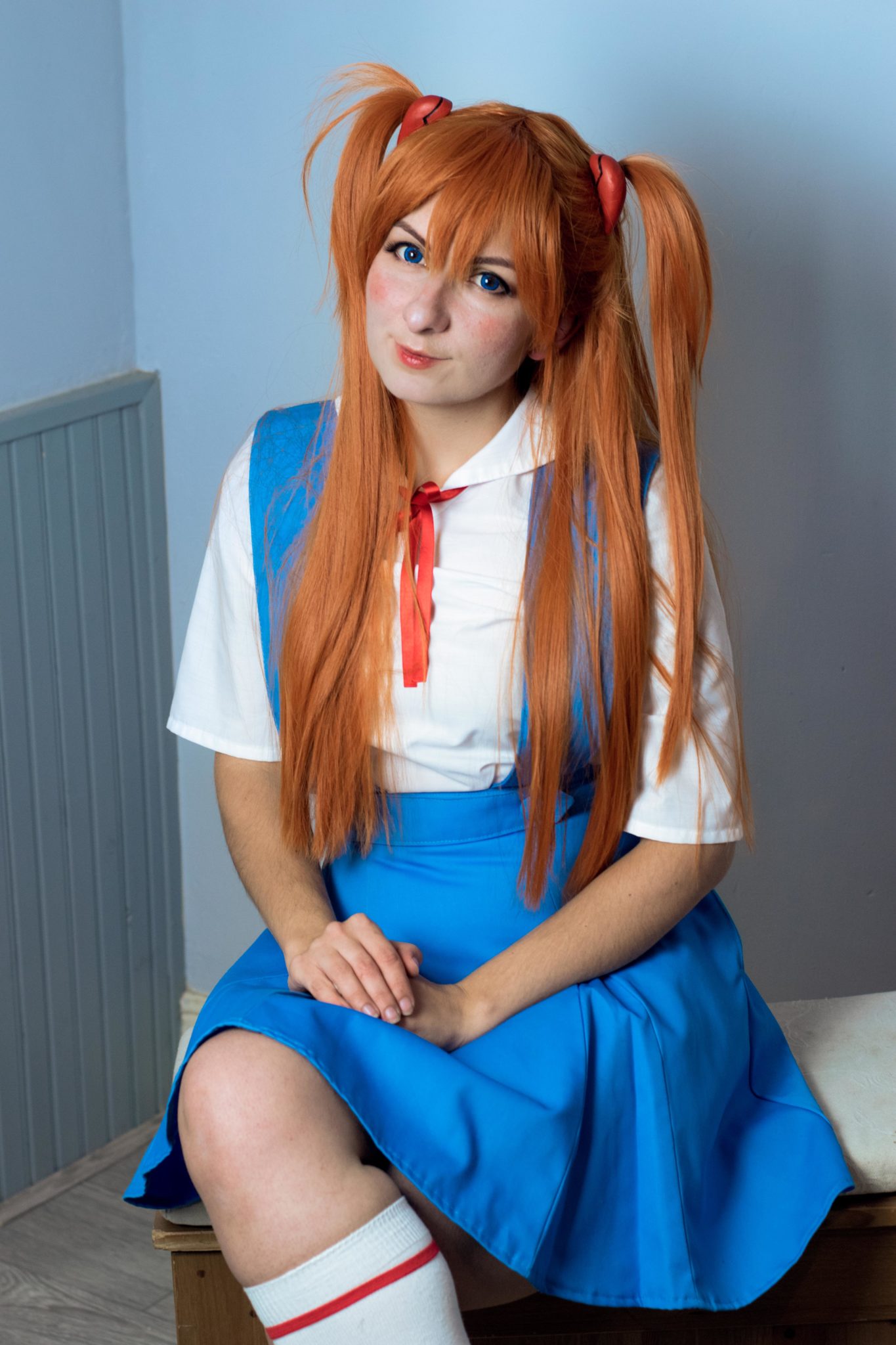
My Neon Genesis Evangelion Uniform is made with twill fabric. It is thick and strong as we well as easy to pleat
Maybe you have heard of chino, denim or gabardine. These are all different types of twill fabrics. What changes is the thickness, use and the way the materials are handled. You may want to investigate a bit more when you make your next garment as there are many possibilities.
If you need a cozy jacket, coat or cloak tweed may be your fabric. Made with wool, this woven twill fabric is rough, thick and very warm. Be careful as it can be tricky to sew it. Also it can warp while you handle it.
3. Satin to go to a ball
Usually made with silk or polyester, one of the characteristics of satin is that it is shiny on one side and dull on the other. It can be quite inexpensive, however I find cheap, bad quality satin gives a carnavalesque look to cosplay. Satin looks best on dresses and special occasion wear. And on a pinch you can even use the “wrong side” of the fabric to obtain a different texture. Most of the time it is easy to sew but make sure your needle is sharp or you may pull some threads from the fabric.
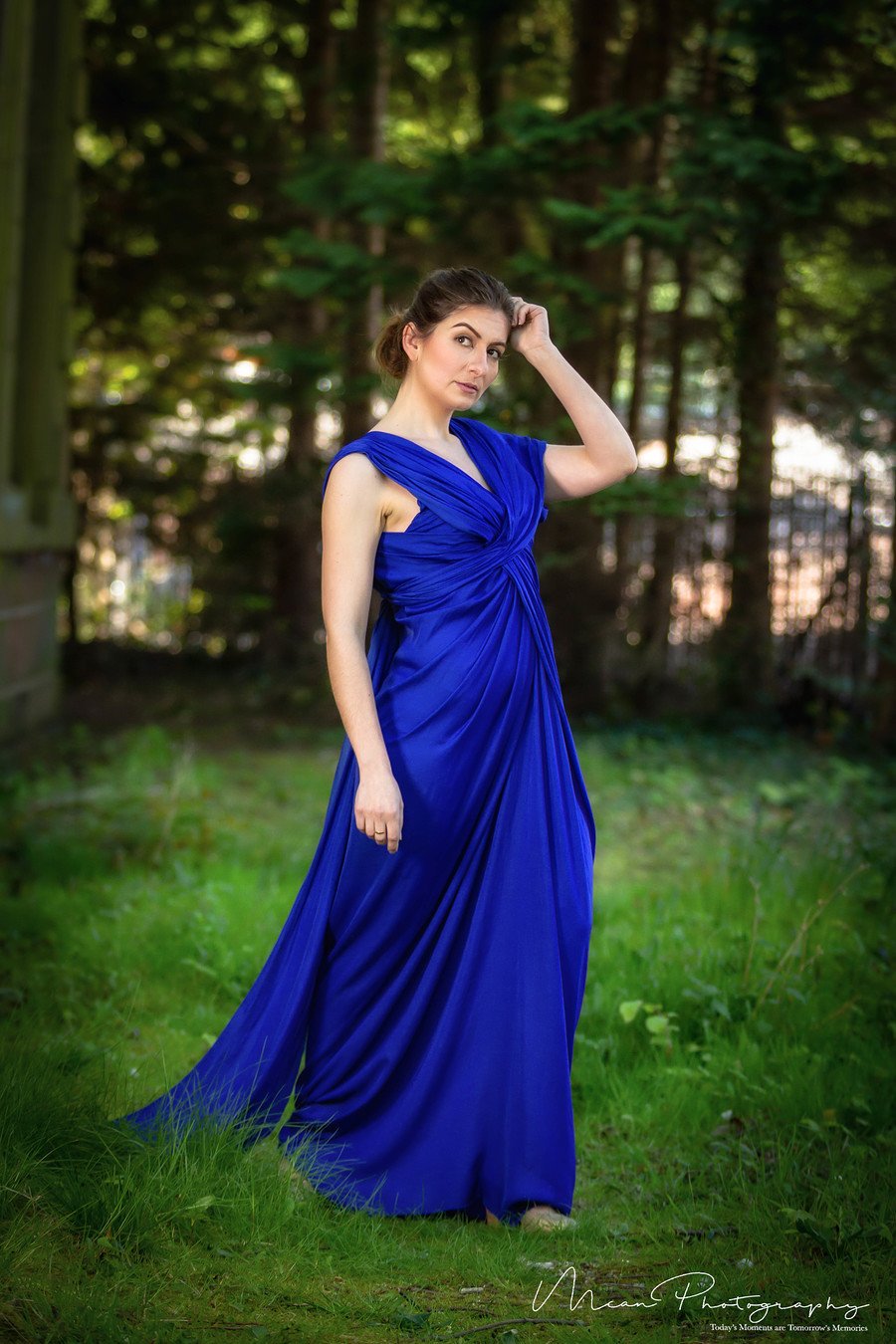
My Wonder Woman Gala Dress is made with satin. It is very soft, drapes well and has a shine to it.
Similar to satin, the sateen is usually a woven cotton fabric and it tends to be less shiny and less slippery than satin. It makes beautiful dresses with a sturdier structure.

As my budget was very tight I used the wrong side of cheap satin on my Elizabeth Middleford cosplay as it was less shiny than the front.
Another alternative to satin if you need a fabric with some shine but with more structure is taffeta (as the fabric I used on Mulan’s coat below). This fabric has a plain-weave and it is very crisp.
4. Chiffon for see through garments
There are many lightweight alternatives but chiffon is my favourite. It is very fine and translucent. It looks great as an overlay on top of other fabrics and it has a lot of movement. However, it is difficult to handle it and it won’t work if you need to create a garment with structure. A slightly thicker and less see through fabric is the georgette.

My Mulan cosplay features a georgette shirt. It is a very slippery fabric and often slightly see through
For a crisp alternative you can use organza. It works beautifully on seethrough bows or poofy translucent sleeves. Also, it tends to be much shinier than chiffon.
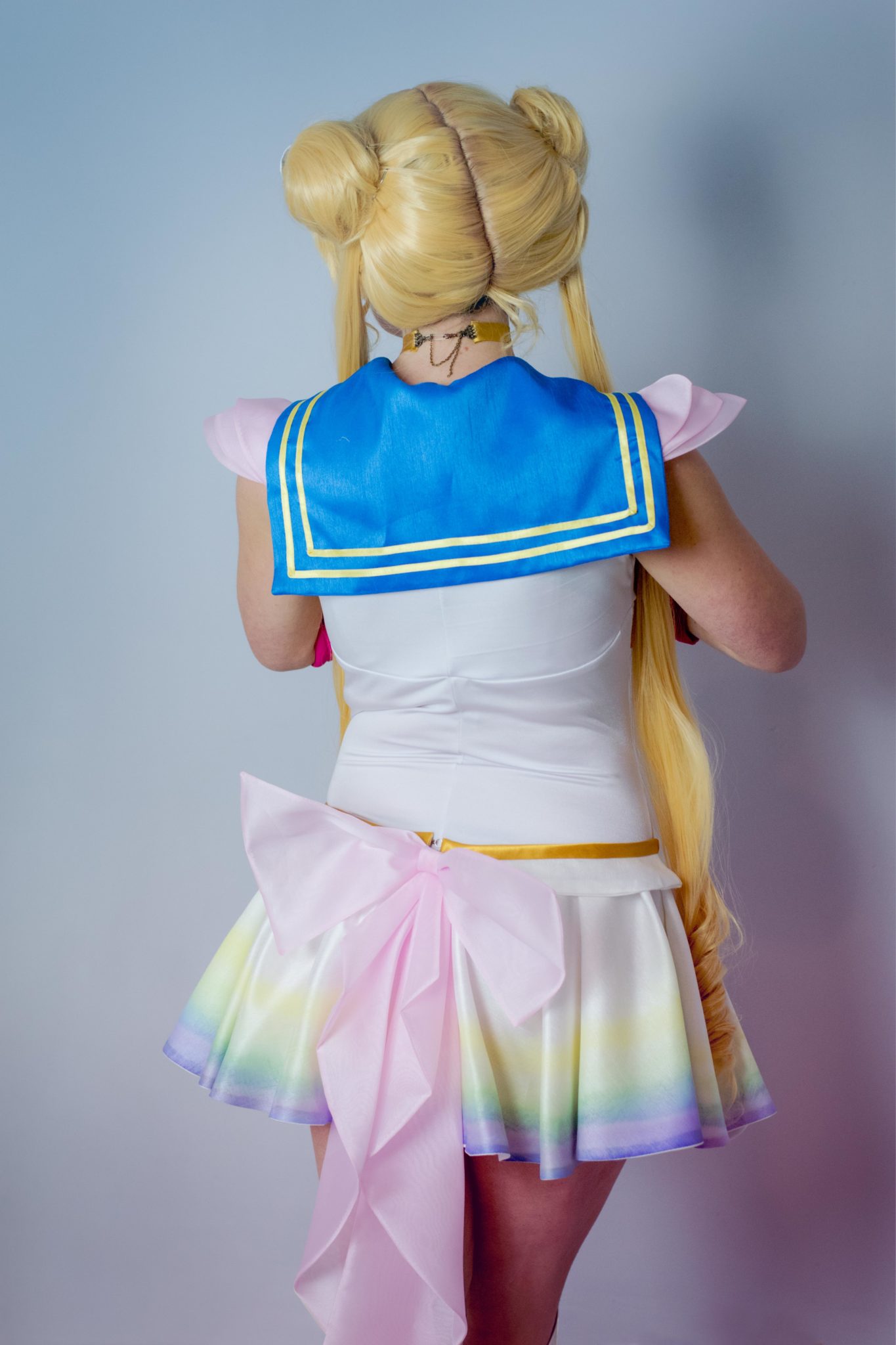
The ribbon and sleeves of my Super Sailor Moon cosplay are organza. It is very crisp and translucent.
For added volume and petticoats, do not forget the tulle, which has a net look to it and is very inexpensive.
5. Velvet for royalty and magic
Velvet is a very royal fabric. I like to use it to create contrast and texture in some of my cosplays. I especially like the blend with Spandex which makes it elastic.

My Cinder Fall cosplay dress was made with stretch velvet. The material is very soft and looks royal and magic
Crushed velvet is the cheaper alternative to velvet. It is however very slippery and more difficult to handle. The edges tend to roll and curl.
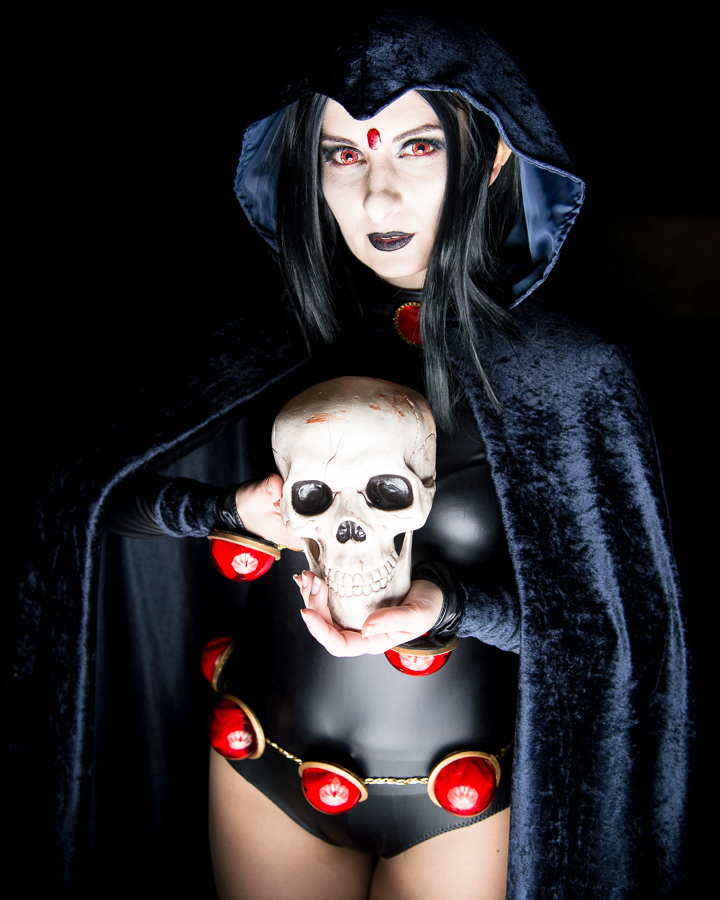
The crushed velvet on my Raven cosplay cloak was actually very cheap but it was slightly difficult to handle at times.
Don’t forget you can use velour and fleece to make plush toys. They have a similar soft texture but would probably not work for many garments.
6. Spandex for superheroes
Also called lycra or elastane, it is a broad term that describes fabrics that contain this man-made fiber which is very elastic. 2-way stretch or 4-way stretch, it is usually a plain woven fabric and it is the main material you can find in bodysuits. This fabric is quite difficult to sew but much needed for any superhero cosplay. It is a must if you want to sew a bodysuit.
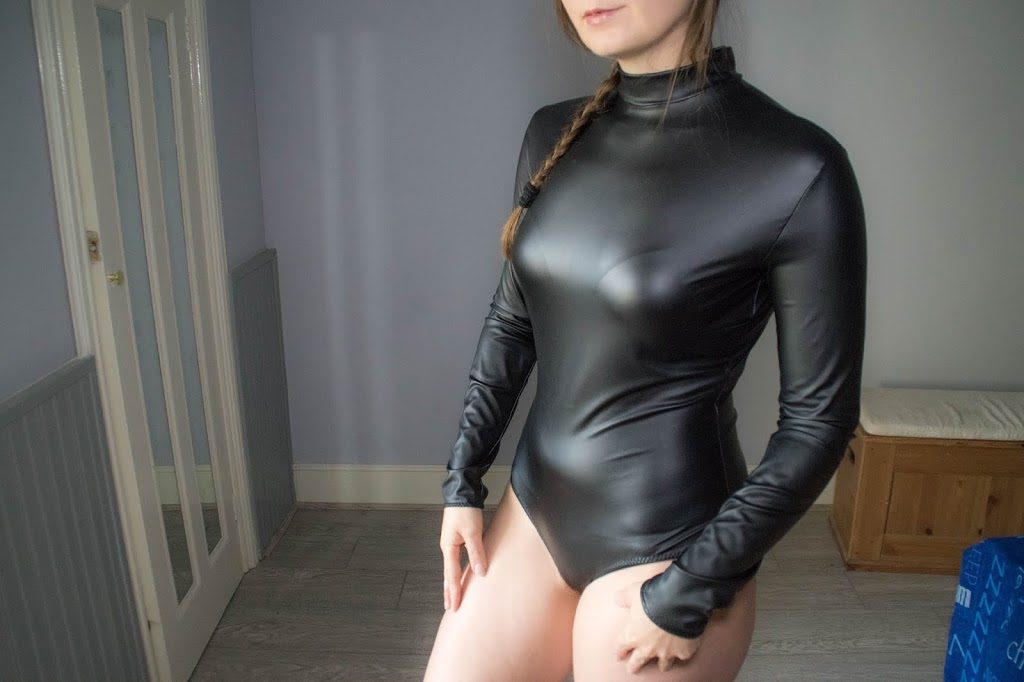
I made this bodysuit with stretchy 4-way spandex, Spandex is the main material on stretch fabrics
An easy variation, yet less stretchy fabric, is the neoprene or scuba (see my Sailor Moon bodysuit above), which mixes spandex with other fibers like cotton or polyester. Do not worry, it doesn’t look like the material used for scuba diving suits.
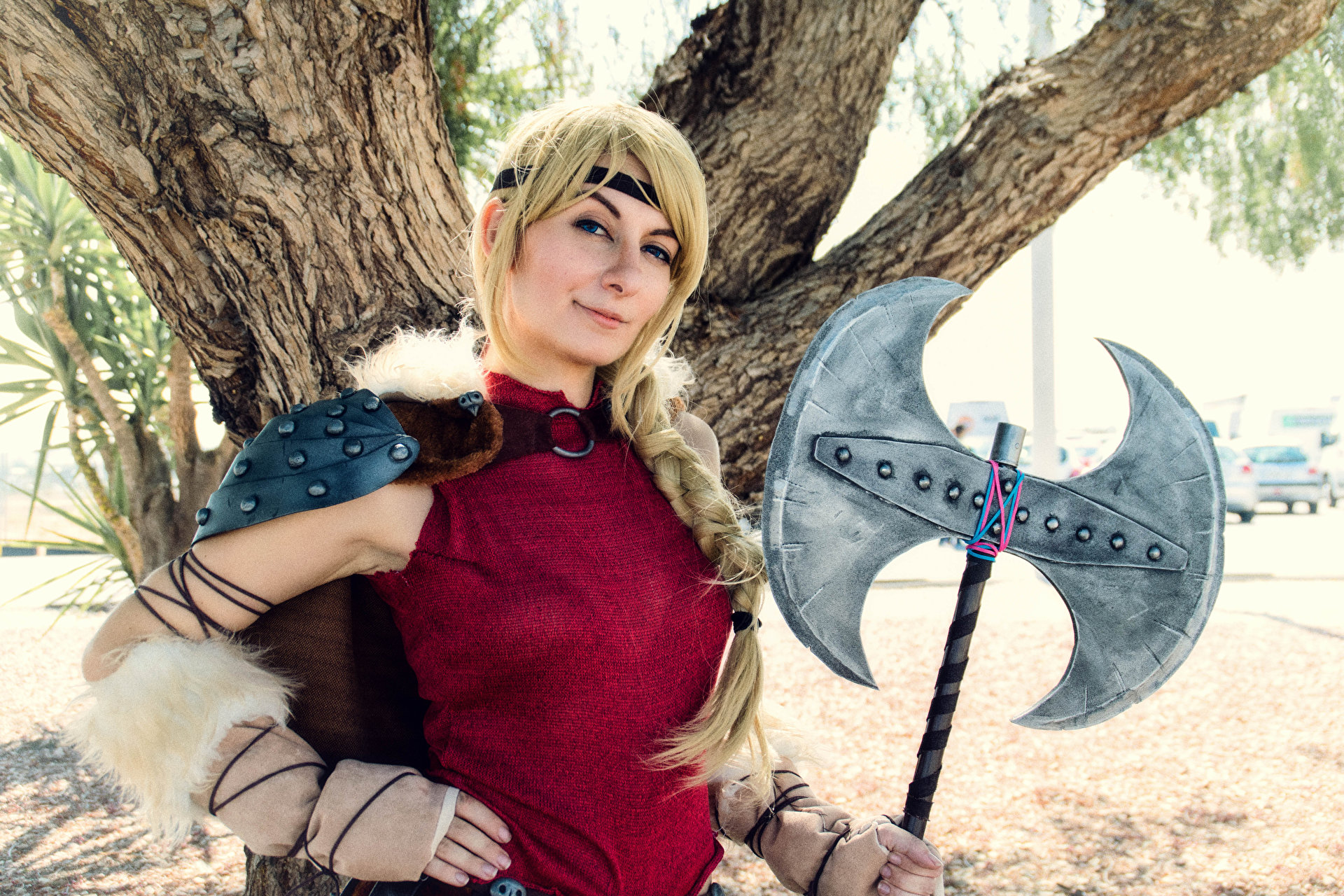
The top for my Astrid cosplay features a knit fabric. These fabrics are stretchy because of the way they are knitted.
Other stretch fabrics include knits like jersey or ribbed knits. However, I don’t really like these as they unravel very easily and are difficult to sew. They make great materials for t-shirts and jumpers but most of the time it is easier and cheaper to buy these types of garments.
7. Leatherette for the warrior in you
For the animal lovers that don’t want to use real leather, this fabric is the solution. There are many types. I would be careful not to choose the thicker upholstery fabrics as they are extremely difficult to sew and they don’t make good garments.
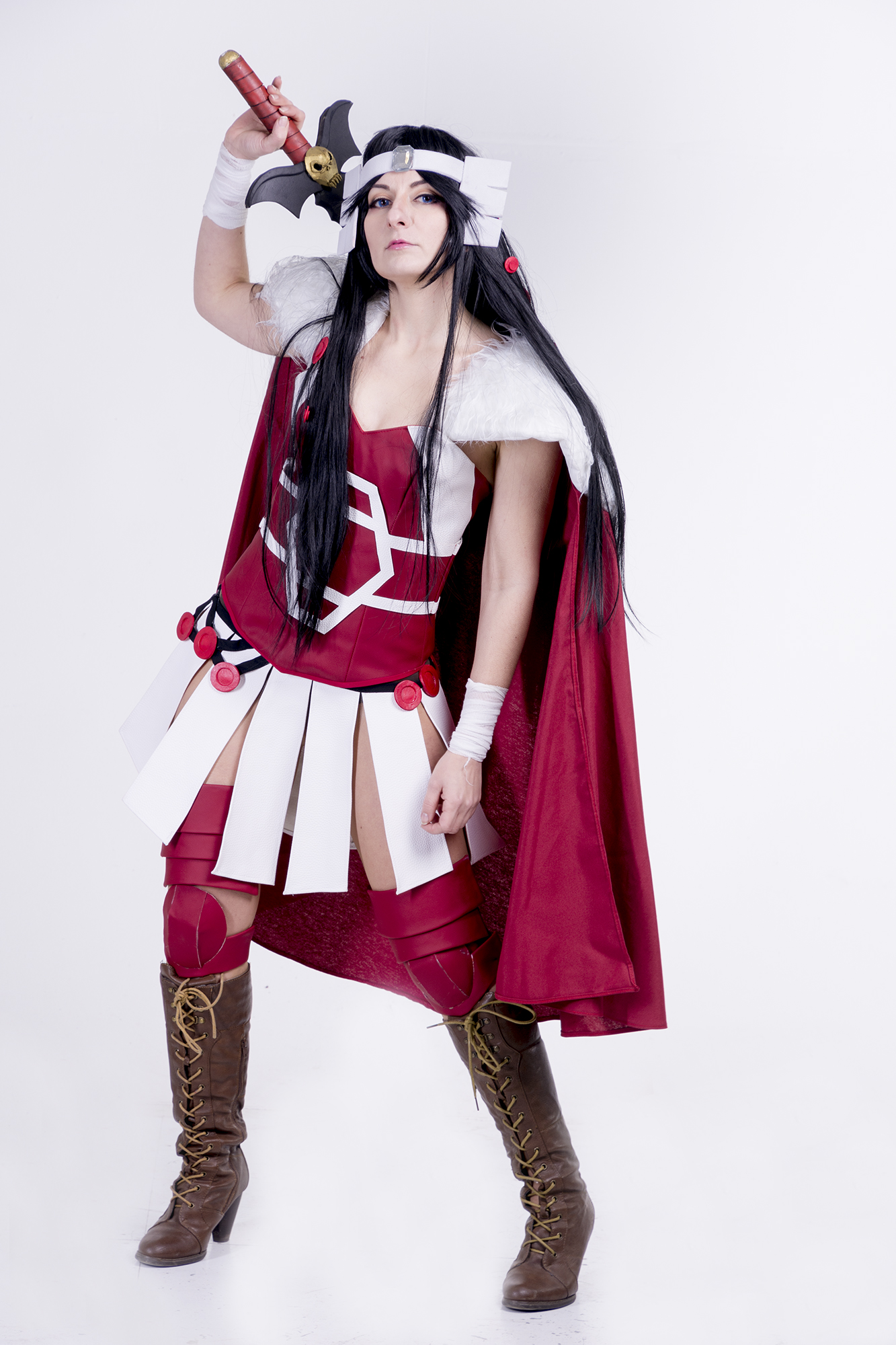
I used leatherette for the corset and skirt on my Lady Sif cosplay. However, the fabric was very difficult to sew at times. The shoulders also feature white fake fur on them.
Suede is also a type of fuzzy leather that you can replace with faux suede. For an even cheaper version you have suedette, but it tends to be flimsier and doesn’t hold its shape by itself.
Again, if you are a defendant of animals remember you can get fake fur, the more expensive deluxe fur is a game changer and does look like the real thing.
Conclusion
Ultimately, the choice of material will depend on your project and your personal preferences. The best way to know which material to use is to go to the fabric shop and touch the different fabrics until you find the one you think will work better. Things like weight or thickness will vary within each group.
Looking for your next project? Browse my patterns and cosplay related downloadables. They come with full instructions and fabric recommendations. Remember you can also support my blog on Ko-fi, there are no subscriptions and you will help me create more cosplays, articles and tutorials to share with you! If you click any of my affiliate links and use my promo codes (ALICECOS) you will help me too!

Let me know if you agree with my choice of materials in the comments or open a discussion on my Social Media on Facebook, Instagram or Twitter.

